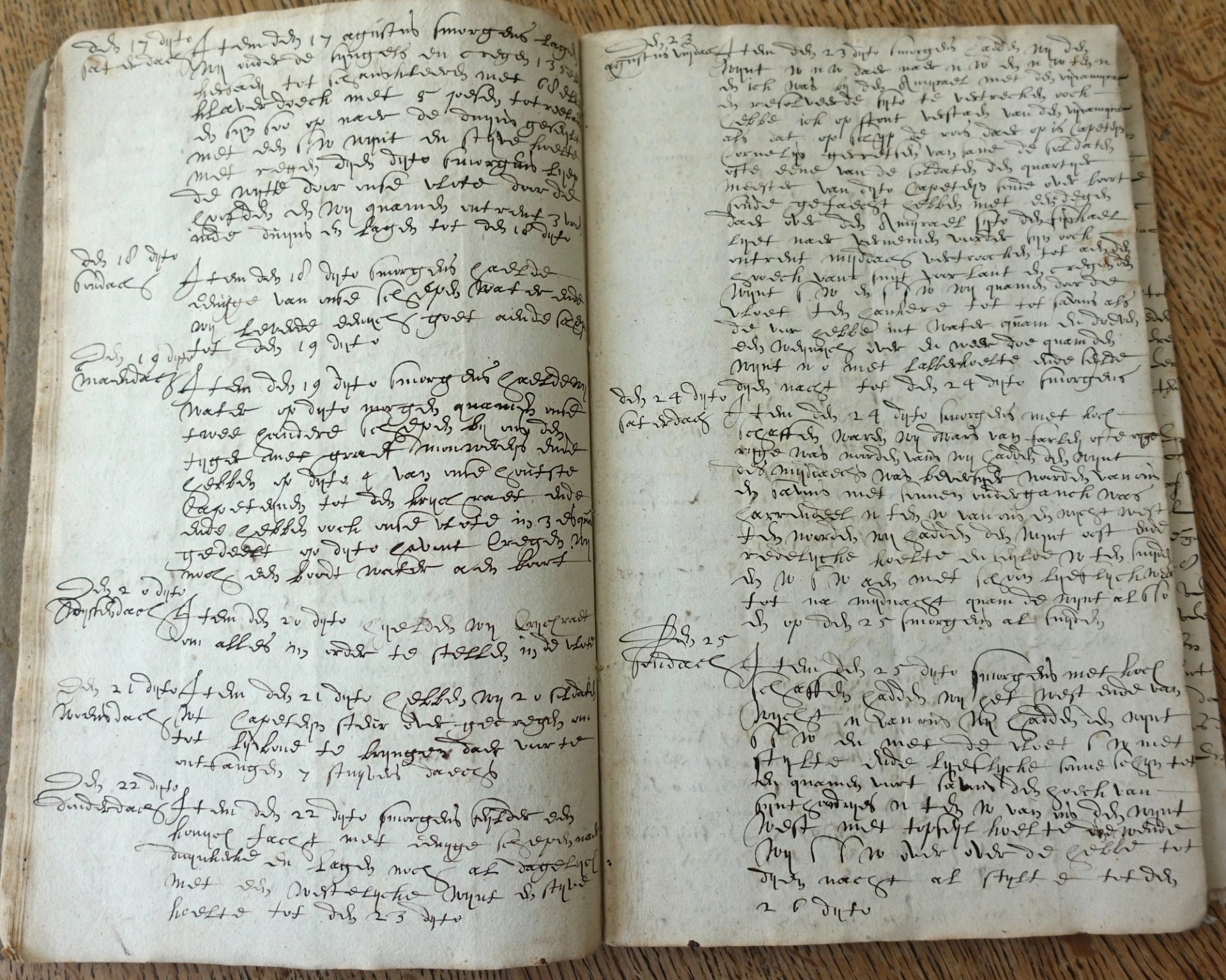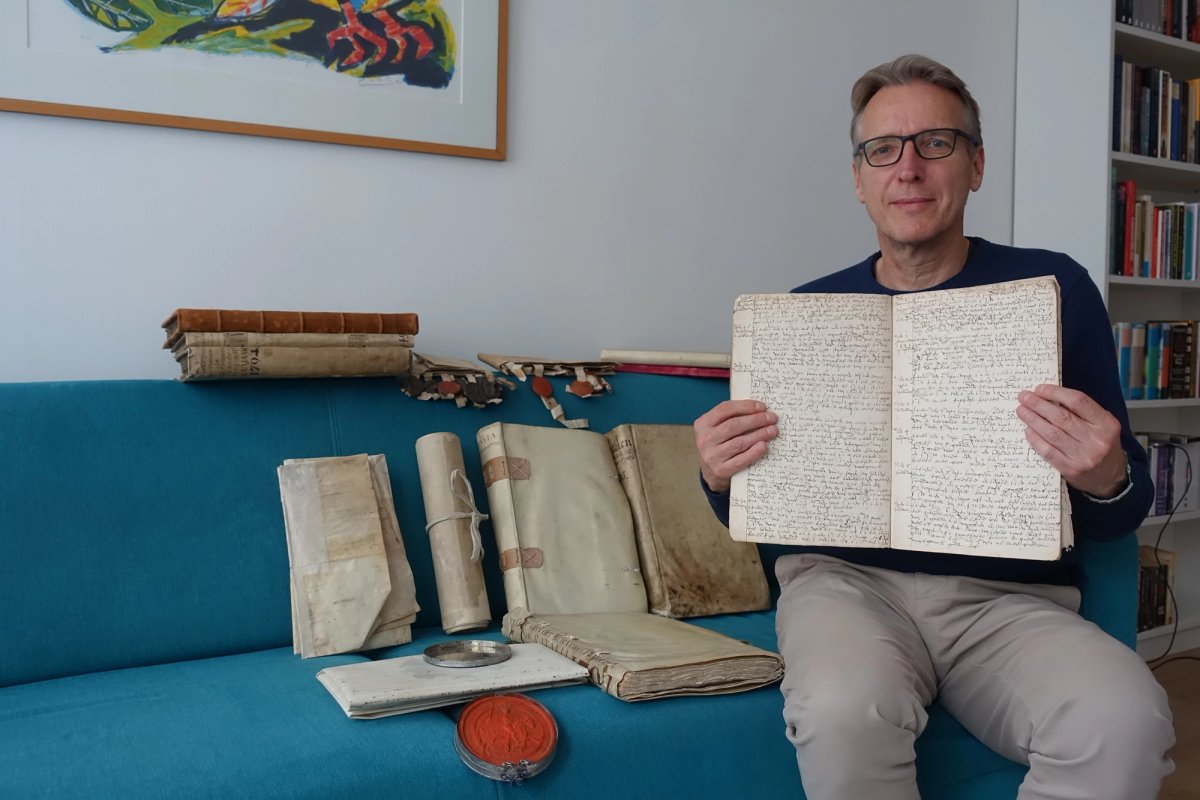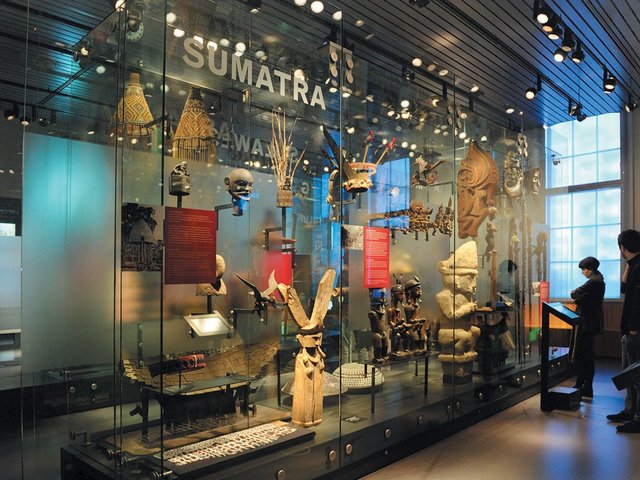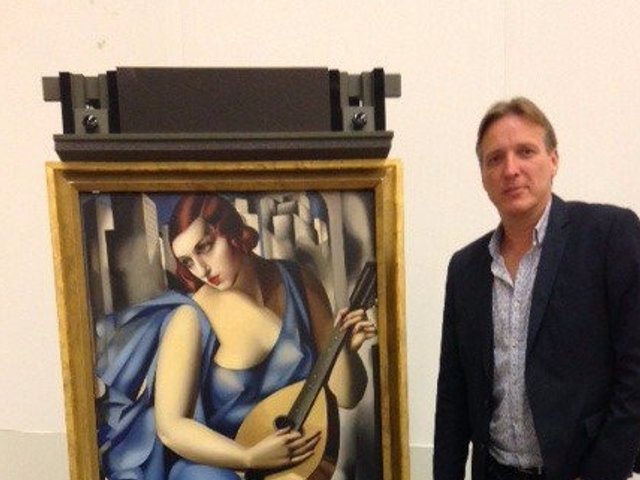A trove of historic documents that were stolen from the Netherlands’ National Archives in The Hague has been recovered by an art detective. The 25 items, which include documents listed on Unesco’s Memory of the World Register, were discovered in an attic then sent to Arthur Brand, who worked closely with Dutch police to verify and return them. The archives did not know they had been taken.
The recovered materials include records relating to the Dutch East India Company (VOC)—described by Unesco as “the largest and most impressive of the early modern European trading companies operating in Asia”—as well as the first ship log compiled by renowned 17th-century Dutch admiral Michiel de Ruyter, a book detailing secret government meetings between 1592 and 1604, and a 4m-long adversarial letter from a knight, dating back to 1445.
Among the VOC documents is a report from the company’s first meeting in 1602, which includes what is believed to be the world’s first corporate logo. Another document details a 1700 visit by the VOC to the Mughal emperor in India. The VOC’s trading and military activities helped establish the Netherlands as a global superpower at the time. The company was, however, also heavily involved in the slave trade and the oppression of people living in Dutch colonies.
De Ruyter’s ship log, written in his own hand, recounts his first naval experience: the 1641 Battle of Cape St. Vincent, where the Dutch assisted the Portuguese against the Spanish. De Ruyter fought in three of the four Anglo-Dutch Wars—naval conflicts fought between England and the Dutch Republic in the 17th and 18th centuries. He also famously led the Raid on Medway in 1667, which was a humiliating defeat for the British Navy.
De Ruyter’s performance in the Third Anglo-Dutch War of 1672-74, which prevented an invasion, is regarded as his greatest achievement. “He saved the Netherlands many, many times against bigger fleets from England, from Spain, from France,” says Brand. “He is considered to be the saviour of the Netherlands,” he adds.

A ship log compiled by Michiel de Ruyter
Photo: Arthur Brand
Brand calls reading de Ruyter’s journal “amazing,” noting a marked change in the handwriting during battle, where it becomes visibly shaky. A single letter by de Ruyter, he estimates would be valued at around €20,000, and the recovered collection includes an entire log. Brand likens the VOC accounts—recounting voyages across India, Indonesia, South Africa, the Caribbean, and Europe, and packed with encounters with emperors, pirates, and sea battles—to reading Treasure Island.
A loft-y discovery
The story of the discovery of the “treasures”, Brand tells The Art Newspaper, began when someone clearing out an ill and incapacitated relative’s attic found a box they thought “might be something important”. Seeking guidance, they contacted a former college history teacher, who, upon seeing the contents, said “my God, this is bad news”. The teacher urged them to contact Brand, who has a reputation for recovering high-profile stolen works—including a Van Gogh painting returned to Groninger Museum in 2023.
“They sent me some pictures and I saw immediately that this was a treasure,” Brand says. His suspicions were confirmed upon seeing the objects in person, and he agreed to take the box on the condition that if the contents were stolen he would return them to their rightful owner. With that agreed he contacted the Dutch police and then, after verifying the objects’ importance, the National Archives.
“They [the National Archives] didn't know that it was stolen. But then they saw these pictures of this box in my home,” explains Brand.
Brand and the police suspect the items were stolen in 2015 by a then-employee of the archives, who worked at the archives for a year. The employee is believed to have borrowed money from the person whose attic the documents were found in and left the box as collateral—never returning to claim it. The alleged thief has since died. “So there the investigation stops,” Brand days.
Brand describes it as surreal to return “these world treasures” in a “a box from the €1 store”, where they had been kept. Despite being gone for a decade, he says the documents were in “perfect condition.”
The National Archives did not respond to The Art Newspaper’s request for comment by the time of publication.
In a statements published in the NL Times, the institution, which is the guardian of some of the most iconic documents from Dutch history, confirmed it had not realised the items were stolen. “We knew some of them were missing, but that could have been due to any number of reasons. For example, a document could have been accidentally returned to the wrong place,” a spokesperson said. “We manage more than 145 kilometres of archives, over 15 million photographs, and 300,000 maps and drawings. With such numbers, it is impossible to have a complete inventory of all the documents.”




